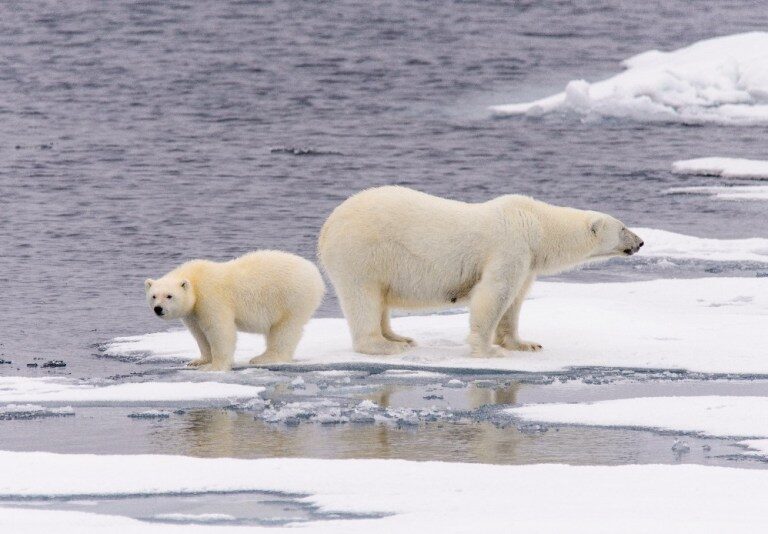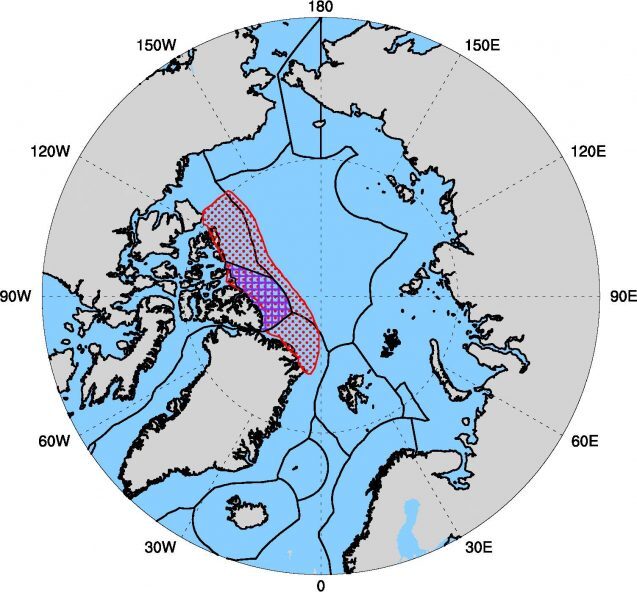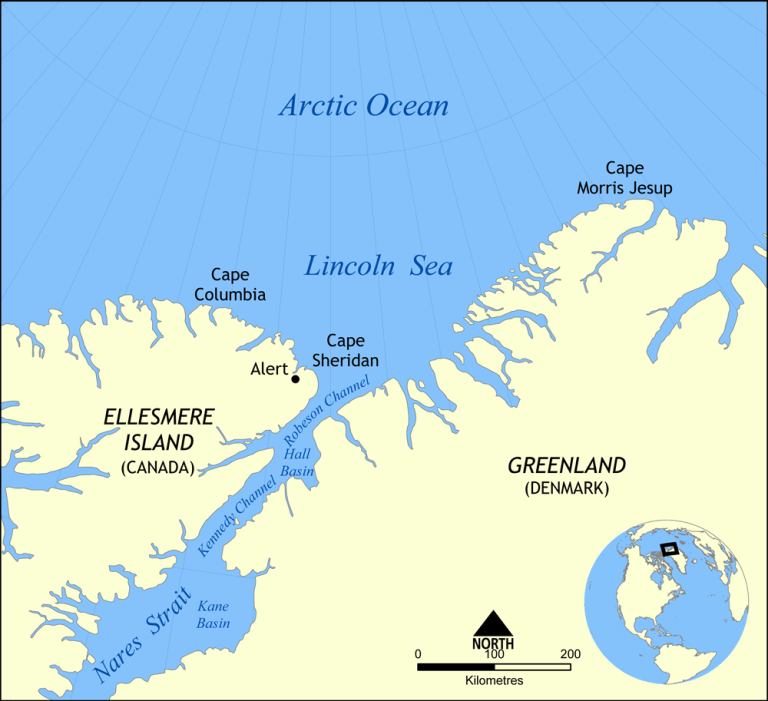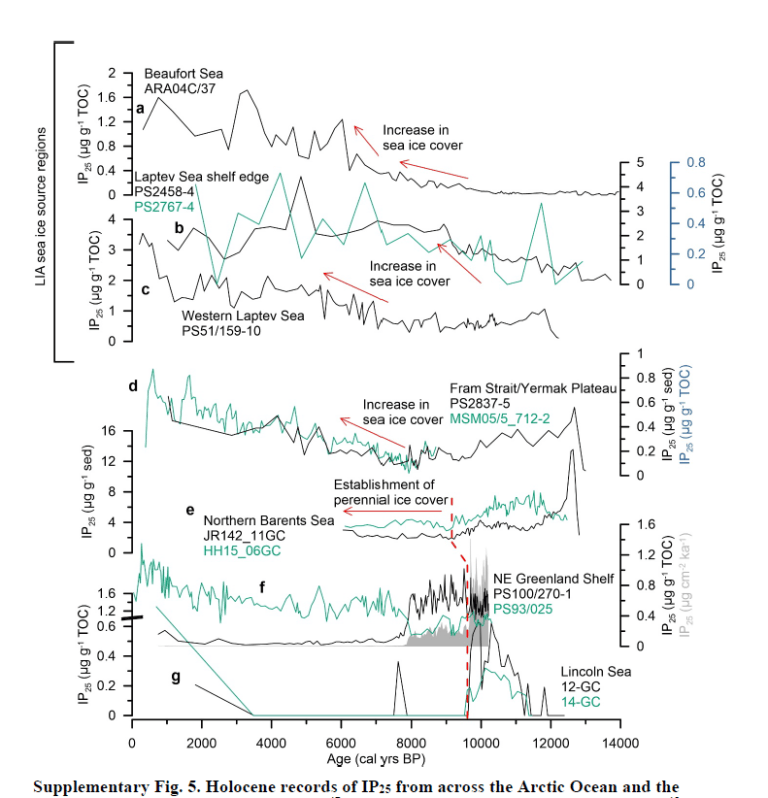Money quote: Here we show marine proxy evidence for the disappearance of perennial sea-ice in the southern Lincoln Sea during the Early Holocene, which suggests a widespread transition to seasonal sea-ice in the Arctic Ocean. [Detlef et al. 2023: Abstract]
Last Ice Area and Lincoln Sea
An illustration of the Last Ice Area in the Arctic, which is currently covered in perennial ice (2-4m thick) that does not melt out every summer (Moore et al. 2019) from the press release for a paper by Newton and colleagues (2021):
The Lincoln Sea discussed in the new paper is withing the LIA, between Greenland and Ellesmere Island, as shown below.
The short animation below shows sea ice thickness from 1979-2022 in the Arctic at the height of summer within the Last Ice Area was ca. 2.5-4.0m thick, which is thinner and less extensive than it was in the 1980s (when it was 4-5m thick or greater). In other words, perennial ice is not gone yet.
Figure S5 from the Detlef paper (below) shows that reduced sea ice during the early Holocene was widespread, with evidence for seasonal ice in the Barents, Beaufort and Laptev Seas as well as NE Greenland and the Lincoln Sea between northern Greenland and Ellesmere Island.
Evidence from several sources indicates that the Eemian produced conditions even warmer than documented during the early Holocene and they lasted longer, as explained in the excellent summary by Leonid Polyak and colleagues (2010). During the early portion of the Eemian at least (ca. 130-120k years ago), summer temperatures were about 5-8 degrees Celsius warmer than today and the Arctic was virtually ice-free. At about 120k years ago, there is evidence from Finland and the Norwegian Sea off Norway that a cooling event lasting 500-1,000 years broke the long stretch of warmth (Helmens et al. 2015).
Not only did polar bear survive these two extended periods when ice-free summers prevailed, but the Eemian warm summers came only about 10,000 years after the bears arose as a unique species. This makes polar bear survival through the Eemian even more impressive than most scientists acknowledge. The polar bears' ability to store excess energy as fat in the spring and metabolize it later when needed must have been fine-tuned by natural selection during this challlenging time (Crockford 2023).
The fact that polar bears survived both extended periods of ice-free summers means that their computer-generated prediction of extinction in a slightly warmer world are groundless.
References
Crockford, S.J. 2023. Polar Bear Evolution: A Model for How New Species Arise. Amazon Digital Services, Victoria. https://www.amazon.com/dp/1778038328
Detlef, H., O'Regan, M., Stranne, C. et al. 2023. Seasonal sea-ice in the Arctic's last ice area during the Early Holocene. Communications Earth & Environment 4:86. https://doi.org/10.1038/s43247-023-00720-w
Helmens, K.F., Salonen, J.S., Plikk, A. et al. 2015. Major cooling intersecting peak interglacial warmth in northern Europe. Quaternary ScienceReviews 122:293-299. http://dx.doi.org/10.1016/j.quascirev.2015.05.018
Moore, G.W.K., Schweigher, A., Zhang, J. et al. 2019. Spatiotemporal variability of sea ice in the Arctic's Last Ice Area. Geophysical Research Letters 46(20):11237-11243. https://doi.org/10.1029/2019GL083722
Newton, R., Pfirman, S., Tremblay, L.B. et al. 2021. Defining the "Ice Shed" of the Arctic Ocean's Last Ice Area and its future evolution. Earth's Future 9(9):e2021EF001988. https://doi.org/10.1029/2021EF001988
Polyak, L., Alley, R.B., Andrews, J.T., et al. 2010. History of sea ice in the Arctic. Quaternary Science Reviews 29:1757-1778. https://doi.org/10.1016/j.quascirev.2010.02.010







And such a model can not only be arbitrarily simple and stupid, it can be trimmed to produce results one wants to see, instead of trying reproduce reality.
Hockey-stick diagram, anyone ?